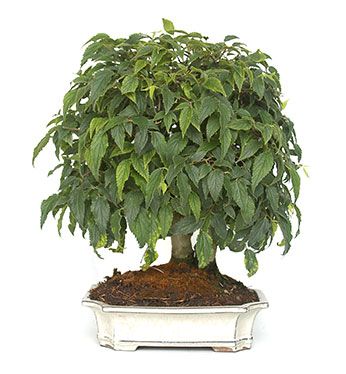Characteristics
Deciduous tree with smooth bark; Appreciated for the coppery-orange color of its leaves when budding, turning yellow-gold in autumn.
Location
In Mediterranean climate areas, outside in full sun throughout the year. In colder areas, to be protected from frost.
Watering
Abundant in summer and moderate in winter.
Fertilization
In spring and autumn.
Re-potting
Every 2 years, depending on the ripeness of the plant, when spring or autumn begins. Trim between one third and half of the roots, remove damaged and dead.
Substrate
100% Akadama, or mixed with a 20% of volcanic gravel.
Pruning and pinching
Pruning
At the beginning of spring sprouting.
Pinching
With the fingers, remove the tip of the emerging bud, leaving 2 leaves. If we had let the shoot grown up to 6 to 8 leaves, cut down to 2 leaves.
Wiring
Spring
Curiosities
We can apply the same cares to the native species of the Mediterranean area «Celtis australis», which produce an edible fruit of the size of a pea.
It was used in the past for the manufacture of tool handles and pitchforks. In the Botanical Garden of Madrid, we can find several notable centenary specimens, one of them called El Abuelo (The Grandpa) is almost 40 m high.

